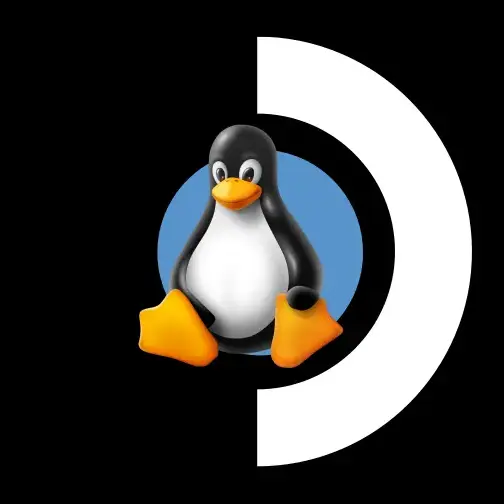

CohortAttack?


CohortAttack?
It would be cool if it was possible to use https://github.com/ClearURLs/Rules/ as a rule source, either as a built in option or configurable with a config option.


They can’t stop you from printing a Glong.


It’s better because PPA isn’t about targeting ads at all. It doesn’t share any browsing history, topics, or any information for ad targeting to advertisers at all. What it does do is provide a way for a website to tell your browser which ads are relevant to an action you take - for example on a checkout confirmation screen the site may tell your browser “here’s a list of ad IDs for the shop you just bought from”. Your browser then checks if it’s seen any of those ads, checking completely using local data that doesn’t leave the browser, then to an aggregator it reports which ads possibly led to your purchase. The aggregator increments a counter for each ad in its database and relays the totals to the advertiser. There are no unique identifiers or any information about your habits or interests involved.
When I initially heard about PPA I also thought it was related to FLoC / topics, but it has nothing to do with ad targeting or sharing information about habits / interests, it’s just a way to tell advertisers “Ad XYZ was effective and led to a sign up/purchase” without revealing who saw the ad or any personal information about them, just the total number of people.


Not when the conversation tracking is done 100% locally. The only thing sent from the browser is telling a server to increment a counter - a single bit of data. It’s hardly any different than a visitor counter that “tracks” how many visitors a site got, which I think would really be a stretch if you claimed that visitor counters were tracking individual users.
I’m not sure if you actually read the details, but this system enables sites to tell your browser which ad IDs are related to an action you’re doing (for example on a check out page the site will give your browser a list of ad IDs for the shop) so that conversion tracking can be done locally in your browser. Then, without needing to share any personal information, your browser can tell an aggregator which (if any) of the ads you have previously seen, and that counter gets incremented.
It’s literally just a view counter for ads that only increments when the ad is successful, and because the correlation between the ad view and the checkout is done locally, the advertiser doesn’t need to link your ad view with your checkout action - your browser did that correlation privately and locally.
Sure no user needs this, but advertisers do everything in their power to track ad conversions and this gives them a mechanism to do that without giving them any information besides “this ad achieved it’s goal 30 times”, which is so much better than adtech tracking every page we visit so that they can have the information to deduce that for themselves.
Somebody should make an api shim that proxies openapi compatible requests to this. And since Microsoft is forcing copilot on windows 10 they’re on the shit list too. Load balance all the AI workloads onto both of them through API adapters.
I’m no expert but what I’ve heard is that there are lots of mosquitoes that don’t bite which are more important for the food chain, but the ones that do bite make up a super small part so if we only eliminated the biting species there would still be plenty of other non-malaria-carrying mosquitoes for the food chain.
At least that’s the theory.


Yep on both my laptops. But I run Ubuntu on my selfhosting nuc and the vps I use as a wireguard reverse proxy - it’s a lot easier to update those every 6 months that way.


Not really just Plex, in addition to powering 6 spinning drives (~50TB total), I also run Nextcloud, immich, Ollama (CPU inference, no GPU), home assistant, grocy, vaultwarden, jellyfin, sonarr, radarr, lidarr, prowlarr, flaresolverr, and overseerr. I run Plex on a separate Intel nuc10 (also included in that $10 of electricity) which has Intel QuickSync which allows me to transcode ~8 simultaneous 1080 streams to friends while leaving most of the rest of the CPU to everything else like running LLMs on the CPU (it’s cheaper to run larger models on a slower CPU with lots of RAM compared to buying a GPU with a matching amount of vram).
So yeah if you don’t care about n+2 double redundant disks or sharing with more than like 5 people or hosting other apps or running AI while people are streaming then yeah you should totally get something less power hungry. Just the Intel nuc10 I use for Plex (but not media storage) has a TDP of 25W so just that would lower the electricity cost to like $2.50/mo.
I mainly chose to just use the cost of my whole setup’s electricity as an example because it didn’t seem worth it to think about how to split up the idle wattage between services especially when it’s gong to come in at way lower than the combined cost of all the major streaming services anyways, plus I don’t want anyone accusing me of needing to underestimate to make my point - even if I overestimate, it’s way cheaper.


I remember when Netflix first introduced the ad supported plan and a lot of people were like this is how they make you pay extra to not see ads, and a lot of other people called that fud because it’s an additional tier and the normal tier isn’t impacted.
At the time I was yelling that it was just the first step - create an ad free plan, wait for people to calm down, then slowly raise the prices until the ad supported plan costs as much as the ad free one used to. And there you have it, they charged extra to not see ads, just with extra steps.
I quit Netflix back then and I’m so glad I did. $10/mo in electricity gets me every streaming service on my Plex, that’s like a $100/mo value and I get to share it with all my friends.

Hexbear in shambles


Brb uploading a 5GiB file from /dev/urandom to make sure there isn’t a byte of space left in OneDrive for them to do this to me.


I’m not sure how you figure that I’m “so angry”, I thought my reply was pretty calm. All I’m pointing out is that valve treats their own employees very well, and that if you have an issue with how developers working for other companies are treated / paid, your beef lies with those companies.
Hell valve doesn’t even charge their cut on steam key sales on other storefronts even though activating the key / downloading the game still uses steam infrastructure.


Then maybe you should complain about the game company that employs those developers, not valve…?


Here’s the ididathing video where they built and installed one of the ones from 3 years ago: https://www.youtube.com/watch?v=j-pKKM6CXr0


The screenshot doesn’t show any version change to signal - the version number is the same, so I was just answering why you might see an update like that since I thought that was part of your question.


Those might be flatpak “refreshes”, which show up as “updating to the same version”. As described by a flatpak maintainer, sometimes an app or runtime gets updated without changing the user-facing version number. I assume that’s what you’re seeing here.


WiFi 6 has been out for like 3 years now so unless you’re on a budget it might make sense to just go for WiFi 7. Of course you’ll need client devices to be 6 or 7 to take advantage but that’s doable on the cheap for laptops with replaceable M.2 WiFi cards. I upgraded both my laptops to WiFi 7 when I replaced my 3 year old u6 pro with a u7 pro, so I can now get around a gig to my nas. The only thing is that 6ghz barely goes through a wall for me so I need to be in the same room unless I want to fall back to 5ghz but it’s still nice to have when the situation calls for it. Plus if your phone isn’t WiFi 6 already your next one will probably be 6 or 7, so when friends are over with their new phones and laptops they get a nice low-contention experience on my WiFi.
My main reason for staying on the bleeding edge is the airtime efficiency upgrades unique to WiFi 6 and 7 which makes a big difference in crowded apartment situations the more people move on from WiFi 5.


I’m gonna go with unlikely.
That seems like a pretty big hole in their lifecycle analysis. The ol’ tow it out of the environment strategy.